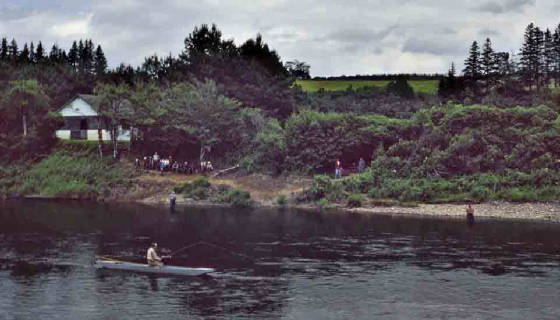Questions,
Questions ...
This week I find myself with puzzling questions. Here are some:
Biologists continue to preach to a concerned public about the futility of trying to reduce Nova Scotia’s coyote population.
They also point out that during the coyote’s time in Nova Scotia there have been few attacks on humans, but fail to
consider that our coyote population is rapidly increasing, which may increase the incidence of attacks. They say the eastern
coyote has become firmly established in only 35 years and now occupies a vacancy created by the extirpation of the eastern
wolf from Nova Scotia around 1900.
Question: What did happen to the eastern wolf and other
species now extinct in Nova Scotia, like the woodland caribou and Sable Island’s Atlantic walrus, and what’s now
happening to Nova Scotia’s mainland moose? Could a newcomer like the eastern coyote suffer a similar
fate?
Question: If we are incapable of reducing coyote numbers, does it not follow
that we also can’t reduce populations of other species such as fish, moose or whitetail deer? If that were true, why
must we regulate harvesting and impose limits on hunters and anglers?
Question:
More realistically, population booms are usually followed by busts, the rapid declines due to population pressures like food
shortage and spread of disease. Can we expect this with Nova Scotia coyotes, and if so, when? Will these animals become more
dangerous to humans when food is scarce?
Many biologists take a similar position on our ability to increase fish and
wildlife populations, labelling such attempts “feel good” projects, useless except for fooling dedicated, hard-working
volunteers into thinking they are accomplishing something positive.
Question:
How can we ignore obvious successes like Atlantic salmon restoration in Nova Scotia’s Margaree, Newfoundland’s
Exploits, and New Brunswick’s Nepisiguit rivers when we should be emulating them elsewhere?
Question: With a decline of Atlantic salmon populations over at least 15 years, culminating with our prospect of
no live-release salmon season in 2010 for most Nova Scotia’s Atlantic Coast Rivers, why has DFO, the federal agency
entrusted with salmon management, no recovery plan in place?
With the decline of Atlantic salmon populations
in Nova Scotia, it has been difficult for salmon conservation groups to maintain volunteer support. Some of these groups have
chosen to study other wildlife species or support activities other than fishing. Angling tourism, so vital to rural economies,
was on the increase in recent years, but will almost disappear in 2010 if we have no live-release salmon season.
Question: How can we fail the Atlantic salmon when it needs our help more
than ever before?
Question: How does the community economic potential of these new directions
compare? Shouldn’t we focus on the activity with the highest economic potential and proven record in Nova Scotia, i.e.
salmon fishing?
Aboriginal communities have the support of Canada’s Constitution and Supreme Court in
their claim to priority status regarding fisheries allocations, second only to conservation requirements. They enjoy the sympathy
of many Canadians, me included, in the quest for respect, understanding, and fair and equitable participation as Canadians.
But conservation groups work hard to conserve salmon and we need aboriginal involvement and help to restore a fishery in which
aboriginals have priority over sport fishing. Another issue is whether or not live-release angling should be deemed a harvest,
given that mortality is next to nothing in a well-managed sport fishery.
No live-release
salmon season in 2010 will once again deliver a staggering blow to volunteer groups that are active in salmon conservation
and restoration projects. Second, lack of angler presence on salmon streams will encourage poaching, an activity that can
seriously and quickly deplete salmon numbers, especially given the minute resources currently allocated to salmon protection.
But the most serious effect may well be the time lost in our attempt to restore salmon that aren’t likely to wait around
for us to settle things. That, along with loss an opportunity to work together, gaining greater respect and understanding
for each other in the process. These negotiations are, in my view, far too important to delegate to DFO, an agency with a
poor record in management of most fisheries.
Question: How can we deny a live-release salmon season with
so much to lose?
Question: Why not join together in asking DFO to restore Atlantic salmon to
historic levels in Nova Scotia rivers?
Question: We’re listening, why don’t we discuss
this?
The 1960s photo of St. Mary’s River’s Ford Pool in its heyday is by Paul Marriner,
angling journalist and author. It is featured in Paul’s fine book, Atlantic Salmon - A Fly Fishing Reference published
by Gale’s End Press, Mahone Bay NS, 2009, available from your local fly fishing shop.
Perhaps
you have answers, comments or other questions. We like to get letters. Discussion is a good thing!
Please stay on the line …
